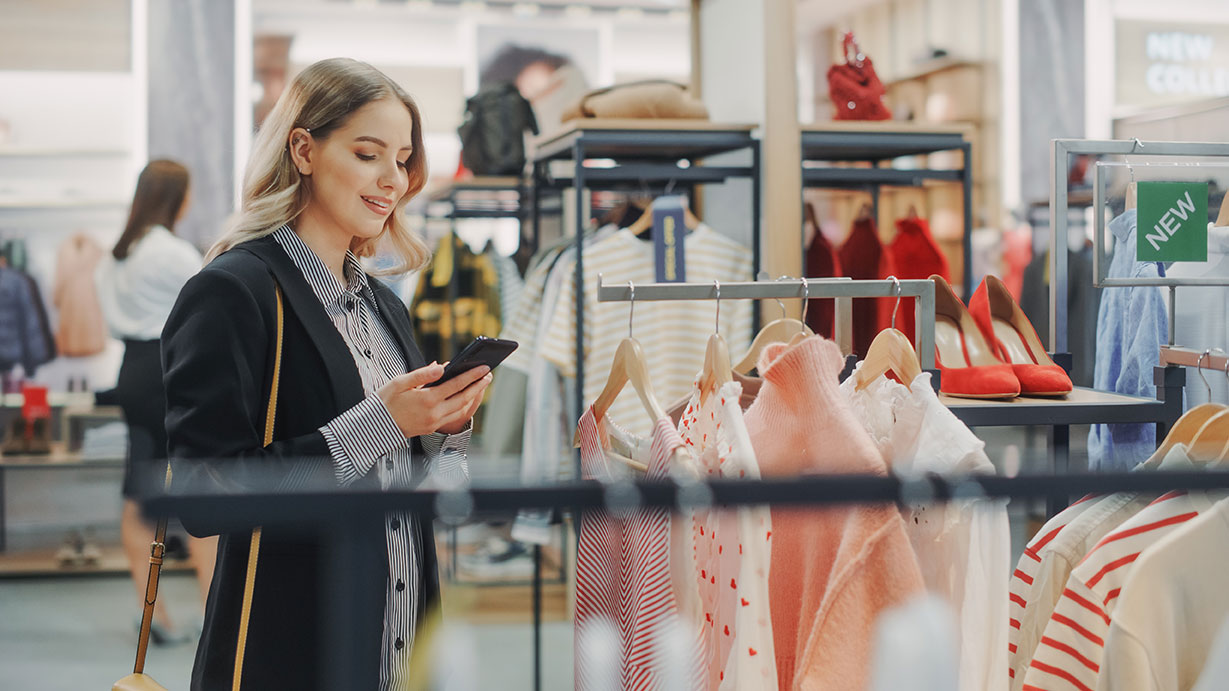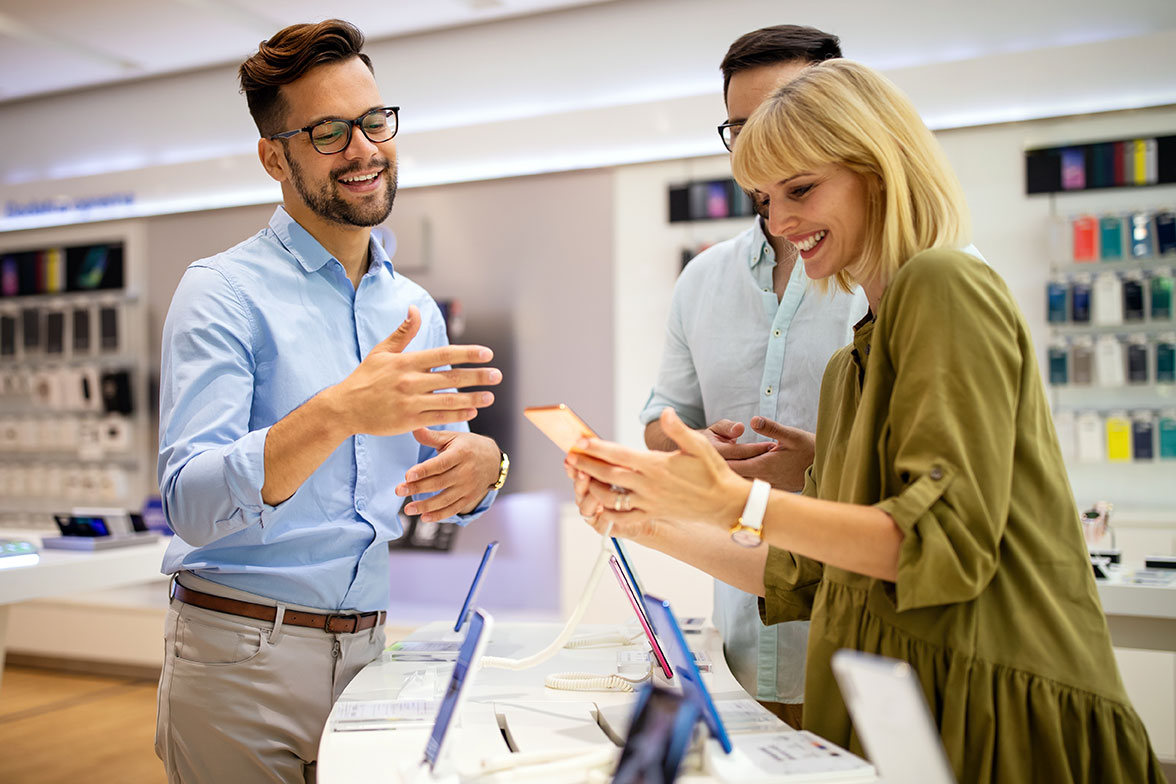What is Retail Media?
In essence, retail media refers to advertising on retailer sites and apps, typically by brands that sell products directly through these retailers. However, it’s not limited to just these brands; retail media can also encompass advertising from non-endemic brands in sectors like financial services or travel. These brands target retailer audiences despite not selling products on the retailers’ sites and apps. Retail media today is evolving past digital to include in-store activation.
The Synergy of Intelligent Out-of-Home Advertising and In-Store Retail Media
Retail media is revolutionizing the digital marketing landscape, presenting brands with innovative opportunities to reach and engage with their target audiences. In this fast-paced digital era, where consumers are constantly bombarded with advertising messages, retail media offers a unique advantage by tapping into the power of online retailers to deliver highly relevant and personalized ads.
The fusion of out-of-home advertising and in-store retail media presents a transformative paradigm for brands seeking to engage with their target audiences. This innovative approach capitalizes on the strengths of both mediums to deliver personalized and impactful campaigns that resonate with consumers on multiple levels.
Leveraging Advanced Technologies for Hyper-Targeted Messaging
Out-of-home (iOOH) advertising utilizes advanced technologies such as AI, data analytics, and location-based geotargeting targeting to deliver hyper-targeted messages to consumers in real-time. By leveraging data from mobile devices, advertisers can understand consumer behavior patterns and preferences with unprecedented granularity. This allows brands to tailor their messaging to specific demographics, interests, and even moods, ensuring maximum relevance and resonance.
ut-of-home advertising seamlessly integrates with in-store retail media to create a cohesive and immersive brand experience and also prove ad effectiveness. By extending the reach of in-store campaigns beyond the physical confines of the store, brands can amplify their messaging and engage with consumers at multiple touchpoints throughout their journey. For example, a consumer browsing products in-store may receive a personalized offer, survey, or recommendation on their mobile device, prompting them to make a purchase or visit the store.
How iOOH helps prove ROI and ad effectiveness.
The effectiveness of this integrated approach is evident in its ability to drive measurable results and ROI for brands. By combining the targeting precision of digital out-of-home advertising with the credibility and trust associated with in-store retail media, brands can create powerful campaigns that drive awareness, consideration, and conversion. The ability to track and measure the performance of these campaigns in real-time enables brands to optimize their strategies on the fly, ensuring maximum impact and efficiency.
As the retail media marketing landscape continues to evolve, it is essential for brands to embrace this medium as an integral part of their marketing strategy. By doing so, they can unlock new levels of customer engagement and propel their business to greater success in an increasingly competitive marketplace. Brands and Agencies are utilizing iOOH from MFour in retail media to understand brand lift, attribution, consumer intent from retail media exposure.
Benefits of incorporating retail media into your marketing strategy with iOOH
The most effective use of iOOH is in measuring in-store retail media, a point underscored in a recent Forbes article. This article emphasizes that measuring in-store retail media with iOOH may be the most impactful way to utilize retail media, particularly because consumers are actively shopping and about to make a purchase. The article suggests that retailers can enhance their in-store digital signage with compelling visuals and timely messages to promote promotions and special offers, ensuring that customers are informed and engaged. Highlighting the effectiveness of a strong retail media approach results in driving sales growth for your business.
In-store retail media also allows for real-time optimization and measurement of campaign performance. Unlike traditional advertising methods, where results may take weeks or even months to analyze, retail media platforms provide immediate insights into ad performance. This enables brands to make data-driven decisions and optimize their campaigns in real-time, ensuring that their marketing efforts are continuously refined for maximum impact.
Challenges and considerations in implementing retail media
While retail media offers numerous advantages, it is not without its challenges. One of the key challenges is the need for a robust data infrastructure and validated consumers. To effectively leverage retail media, brands must have access to accurate and comprehensive data. This requires the implementation of robust data collection, storage, and analysis processes to ensure that the right insights are derived and utilized. However, the main challenge lies in measuring the effectiveness of retail media. While many businesses rely on sales lift to demonstrate impact, other factors also need consideration. This is where obtaining consumer perspectives through brand lift measurement with iOOH becomes crucial, providing a more holistic view of retail media’s effectiveness.
Another challenge is the need for continuous optimization and adaptation. The digital marketing landscape is constantly evolving, and what works today may not work tomorrow. Brands must be agile and willing to adapt their strategies based on changing consumer behavior, technological advancements, and industry trends. But those brands or agencies who do, will be the ones to benefit the most from these channels.
Additionally, privacy concerns and data protection regulations pose challenges for brands leveraging retail media. With increasing scrutiny on data privacy, brands must ensure that they comply with relevant regulations and maintain the trust of their customers. Transparency and consent are crucial in building and maintaining strong customer relationships.
Companies like MFour offer a commitment to clients and consumers with its Fair Trade Data® policy that is crucial in ensuring the integrity and reliability of the data collected. By adhering to Fair Trade Data® principles, MFour demonstrates its commitment to ethical data practices, transparency, and accountability. This policy is essential in maintaining trust with consumers and clients alike. Not only are consumers paid fairly and above market value, but it also ensures that data is collected responsibly and with respect for privacy and confidentiality. Additionally, the Fair Trade Data® policy helps to uphold the quality of the data, ensuring that it is accurate, up-to-date, and representative. This commitment to Fair Trade Data® principles not only benefits MFour and its clients but also contributes to a more ethical and sustainable data industry as a whole.
See some iOOH Case Study examples from MFour
In conclusion, the convergence of intelligent out-of-home advertising and in-store retail media represents a paradigm shift in the way brands engage with consumers. By leveraging the strengths of both mediums, brands can create personalized and immersive experiences that drive tangible business results. As technology continues to evolve and consumer expectations evolve, the role of intelligent out-of-home advertising in shaping the future of retail media will only continue to grow.
Have questions about how iOOH can help your brand or agency effectively launch effective retail media campaigns?




